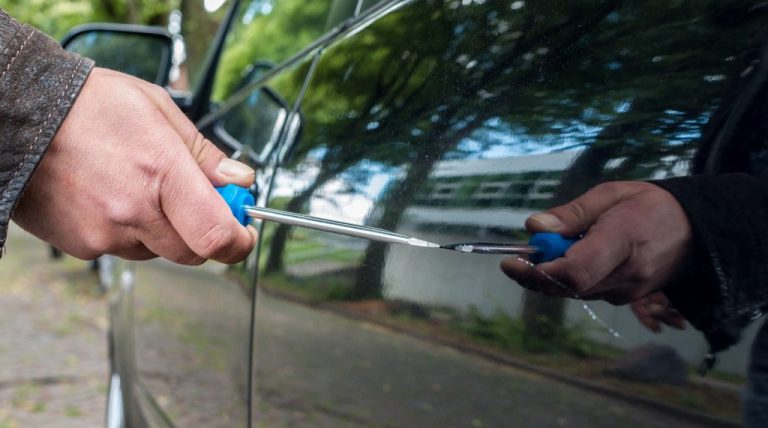How Long Can A Baby Be In A Car Seat
One of your main concerns as a new parent is definitely making sure your infant is safe while traveling by automobile. Using a baby car seat is an essential part of automobile safety. But a crucial question that often comes up is: How much time can a baby spend in a car seat? This apparently straightforward question touches on important elements of baby health and wellbeing, so knowing the variables that go into figuring out how long your child should spend in a car seat is crucial.
Even while car seats are designed to be safe, using them for extended periods of time, especially when a baby or infant is present, may be harmful to their health. This article explores the safest ways to keep a baby in a car seat for extended periods of time, including information on possible risks, recommendations, and professional guidance. Equipped with this understanding, parents may make wise choices to guarantee their child’s comfort and security while driving.
The Basics of Baby Car Seats
It’s important to comprehend the many kinds of baby car seats that are offered before getting into the duration details. Infant seats, convertible seats, and booster seats are the three main categories into which baby car seats are often divided. Depending on the child’s age, size, and developmental stage, each variety has a distinct purpose.
Infant car seats are rear-facing and are usually used from birth until the child weighs between 22 and 35 pounds. These chairs are designed to support a baby’s delicate head and neck, protecting them. Conversely, convertible seats may be used with the newborn facing backwards and the youngster facing forwards as they become bigger. For older kids, usually around age 4, booster seats are used to raise them to a safe height so they can use the regular seatbelt.
Your baby’s safety in any car seat depends on using and positioning the seat properly. The first step in avoiding any mishaps or injuries while traveling is to comprehend the design and function of each sort of car seat.
How Long Can a Baby Be in a Car Seat? The General Guidelines
How long can a baby stay in a car seat? This is still the most important issue for many parents. There are established broad rules, however, the answer varies depending on the child’s size and age.
According to instructions, newborns should not remain in their car seat for more than two hours at a time. This is due to the fact that their bodies are still growing, and prolonged immobility might create stress on their sensitive joints and muscles. Additionally, prolonged sitting may narrow their airway, which might make breathing difficult.
The amount of time your kid can spend safely in a car seat may increase significantly as they become older. Frequent breaks are still necessary, however, particularly on lengthy journeys. As your baby’s motor skills improve around six months. They may be able to sit in a car seat for longer amounts of time, but you still need to use it sparingly no more than a couple of hours at a time.
The Risks of Leaving Your Infant in a Car Seat for Too Long
Even while car seats are made with safety in mind, putting a baby in one for long periods of time may cause a number of health problems. The most worrisome danger is positional asphyxia. This happens when the baby’s airway is blocked by the seat’s position or their posture. The head may droop forward in newborns and younger infants due to weaker neck muscles, which might impede breathing. It is crucial to ensure that their seat is appropriately reclined because of this.
Additionally, your baby’s musculoskeletal system may suffer from prolonged use of a car seat. An extended period of time spent in a tight seat may strain the spine and result in pain or misalignment. Since a baby’s bone structure and muscle tone are still growing. Prolonged use of a car seat might cause long-term developmental problems, especially with the hips and back.
Long-term usage of a car seat may have an impact on a baby’s emotional health in addition to their physical health. Especially in the first few months of life, babies need regular holding and comforting. Even while car seats are safe, they don’t provide the same emotional bond as being carried or hugged. Increased weeping and fussiness may be a result of prolonged seclusion in a vehicle seat.
How to Safely Transport Your Baby in a Car Seat
Correct installation and placement are crucial for your baby’s safety and comfort in a car seat. First and foremost, make sure the car seat is always placed properly and in accordance with the manufacturer’s recommendations. In the case of an abrupt halt, an excessively loose seat might result in serious injuries.
Next, make sure your infant is properly harnessed. The chest clip should be at armpit level, and the straps should fit snugly against their body. If your kid is a newborn, make sure their head doesn’t sag forward by adjusting the seat’s reclining angle.
Finding a balance between safety and comfort is the aim. Making the right changes, stopping often, and keeping a close eye on your infant can help them remain safe and healthy while driving.
Car Seat Safety for Newborns: Special Considerations
When it comes to using car seats, newborns need extra attention. Their neck muscles are still developing, and their heads are proportionately bigger than their bodies. Because of these considerations, it is especially important to make sure they are in a car seat that faces backwards and fully supports their head and neck. For as long as feasible, or until they hit the seat’s maximum weight or height restriction, newborns should stay in a rear-facing posture, according to the American Academy of Pediatrics.
Newborns should never be left in a rear-facing car seat for more than two hours, even if it is correctly installed. It is even more crucial to take regular rests since babies this young have little capacity to modify their own posture.
How Long Can Your Baby Safely Sleep in a Car Seat?
It’s tempting to let a baby nap in their car seat during a long journey. But this is not always the safest choice. Sleeping in a car seat for extended periods can pose serious risks, including positional asphyxia. Babies should ideally sleep in a flat or semi-reclined position to prevent their head from flopping forward.
If your baby falls asleep in the car seat, it’s essential to monitor them closely. If possible, transfer them to a flat surface once the vehicle has stopped. In the event that the journey must continue, taking regular breaks allows you to check on your baby and ensure they are still safe and comfortable.
Conclusion
The question is, how long can a baby be in a car seat? does not have a one-size-fits-all answer. As a general rule, newborns and young infants should not be in a car seat for more than two hours at a time. As your baby grows, they may be able to tolerate longer periods. But care should always be taken to provide breaks and monitor their comfort. Parents must balance the safety and well-being of their baby during car travel by ensuring the proper use of car seats. Taking regular breaks and being aware of the signs of discomfort. By following these guidelines, parents can make every car trip a safe and comfortable journey for their little one.







